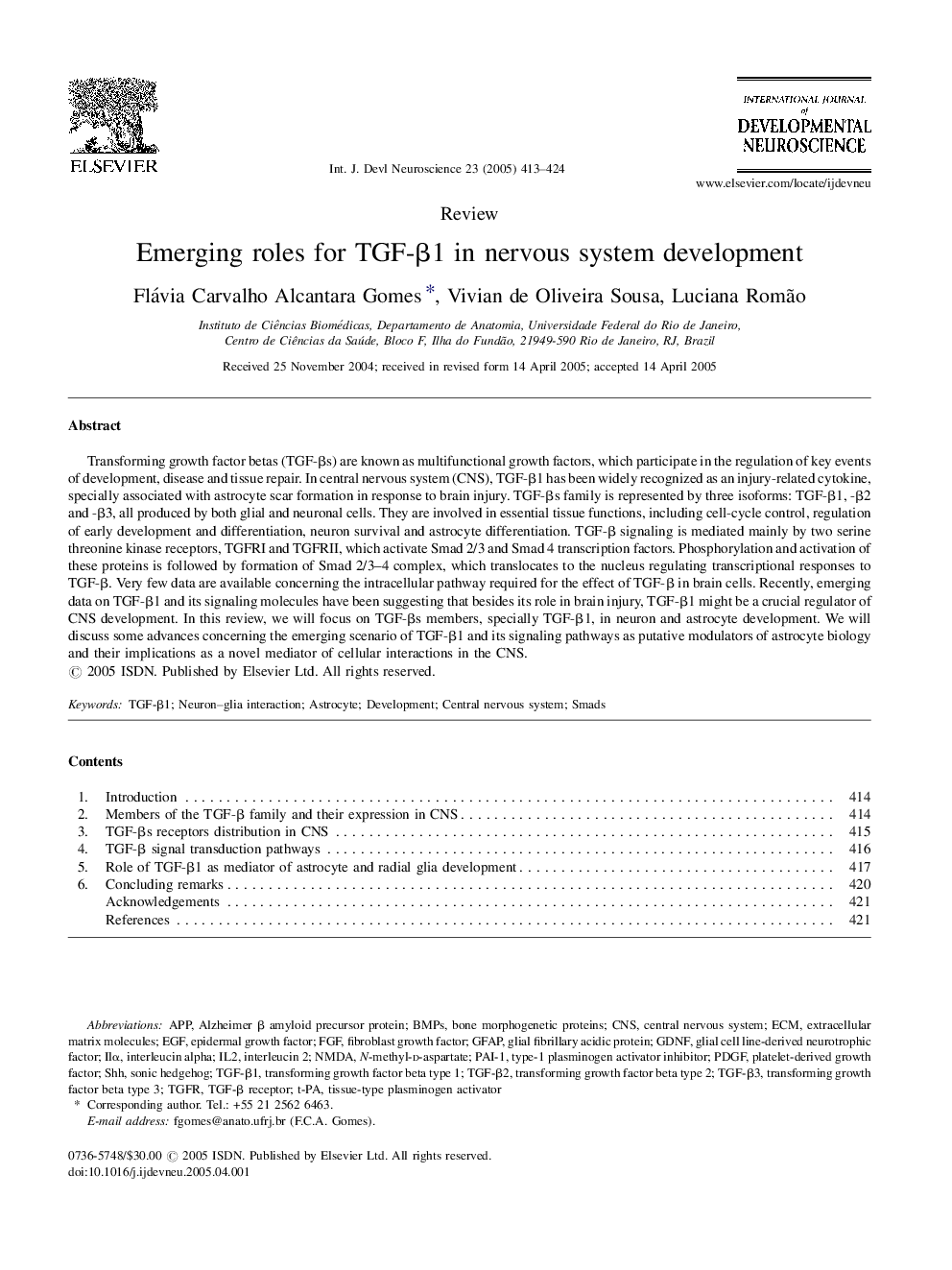| Article ID | Journal | Published Year | Pages | File Type |
|---|---|---|---|---|
| 9933573 | International Journal of Developmental Neuroscience | 2005 | 12 Pages |
Abstract
Transforming growth factor betas (TGF-βs) are known as multifunctional growth factors, which participate in the regulation of key events of development, disease and tissue repair. In central nervous system (CNS), TGF-β1 has been widely recognized as an injury-related cytokine, specially associated with astrocyte scar formation in response to brain injury. TGF-βs family is represented by three isoforms: TGF-β1, -β2 and -β3, all produced by both glial and neuronal cells. They are involved in essential tissue functions, including cell-cycle control, regulation of early development and differentiation, neuron survival and astrocyte differentiation. TGF-β signaling is mediated mainly by two serine threonine kinase receptors, TGFRI and TGFRII, which activate Smad 2/3 and Smad 4 transcription factors. Phosphorylation and activation of these proteins is followed by formation of Smad 2/3-4 complex, which translocates to the nucleus regulating transcriptional responses to TGF-β. Very few data are available concerning the intracellular pathway required for the effect of TGF-β in brain cells. Recently, emerging data on TGF-β1 and its signaling molecules have been suggesting that besides its role in brain injury, TGF-β1 might be a crucial regulator of CNS development. In this review, we will focus on TGF-βs members, specially TGF-β1, in neuron and astrocyte development. We will discuss some advances concerning the emerging scenario of TGF-β1 and its signaling pathways as putative modulators of astrocyte biology and their implications as a novel mediator of cellular interactions in the CNS.
Keywords
PAI-1N-methyl-d-aspartateGDNFNMDAPDGFAPPTGF-β2t-PAFGFTGF-β3IL2GFAPTGF-β1SMADsEGFECMBMPsAstrocyteneuron–glia interactionShhCNSDevelopmentcentral nervous systemsonic hedgehogepidermal growth factorplatelet-derived growth factorfibroblast growth factorGlial cell line-derived neurotrophic factorTissue-type plasminogen activatorType-1 plasminogen activator inhibitorExtracellular matrix moleculesGlial fibrillary acidic proteinbone morphogenetic proteinsTGF-β receptor
Related Topics
Life Sciences
Biochemistry, Genetics and Molecular Biology
Developmental Biology
Authors
Flávia Carvalho Alcantara Gomes, Vivian de Oliveira Sousa, Luciana Romão,
